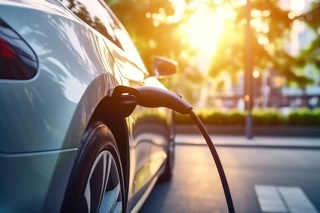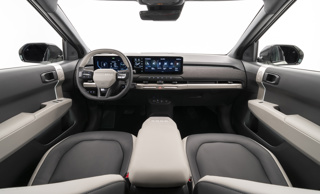Next April see the introduction of a completely reimagined tax system for new cars, replacing the current format which sees the tax paid on a vehicle determined by its CO2 emissions.
The current tax reductions and exemptions for ‘greener’ cars are to be scrapped, and new rules put in place.
The changes, announced by Chancellor George Osborne in his summer Budget last July, mean that many new lower-emission cars will see a significant hike in their annual car tax bill.
The new rules apply to cars first registered on or after April 1 2017. In the first year the car tax – or Vehicle Excise Duty (VED) – will be charged according to the CO2 emissions of the vehicle. But from year two, cars will be divided into three bands:
• Zero Emissions: cars with no emissions will be exempt from tax (unless they cost more than £40,000).
• Standard Rate: a flat ‘Standard Rate’ of £140 per year (the vast majority of cars are expected to fall into this band).
• Premium: cars with a list price in excess of £40,000 will incur a supplement of £310 from year two until the sixth year after registration. This covers all cars, even zero-emission electric cars.
Cars costing more than £40,000 that have any CO2 emissions will also pay the £140 standard rate, putting their tax at £450 per year (then falling to £140).
The changes mean that only all-electric cars costing less than £40,000 will be free to tax. Even low emission hybrids will pay in a bid to maintain treasury income from car tax in the face of falling fleet average CO2 emissions.
The current tax band structure based on CO2 bands was introduced in 2001 when average UK new car emissions were 178g/km of CO2. The Band A threshold of 100g/km or below, in which cars pay no car tax, was introduced in 2003 when average new car emissions were 173g/km.
Since then, to meet EU emissions targets, average new car emissions have fallen to 125g/km. This means that an increasingly large number of ordinary cars now fall into the zero- or lower-rated bands.
So is it positive news for dealers? And how are these changes likely to affect buyers’ habits?
According to an AA Populus survey last summer, almost three out of every five AA members (59%) said there would be little or no incentive to buy low CO2 emissions cars following changes to car tax bands.
We may well see the new rules remove the incentives to buy greener new cars – and instead encourage more people to buy greener used cars.
Interestingly, the used car portal AA Cars found Q2 2016 stock levels of electric vehicles on its site was 600% higher than the same period two years earlier.
Motorists will also be weighing up whether it’s cheaper to buy now or hang on until after next April.
Will we see a spike in registrations as people rush to buy a new low-emission car to beat the April 1 deadline? (Cars registered before April 1 2017 will, of course, remain in the current car tax system.)
Or perhaps the opposite will happen, and they’ll wait until after April 1… It all depends on a car’s current and new tax band.
In addition, the new system might prove more complicated for used car dealers and buyers because it only applies to new registrations – the old system will continue to run in parallel for vehicles first registered before April 1 2017.
This means there could be a significant difference in the future cost of car tax between two used cars first registered only a few days or weeks apart.
It’s important to start considering the potential impact of these fundamental changes on your business now.
The introduction of the new car tax bands could well alter the current trend of people buying new lower-emission cars.
And this in turn could prove to be a huge opportunity for dealers of used cars in 2017 and beyond.
Author: Howard Curle, operations director of AA Vehicle Inspections.


















Login to comment
Comments
No comments have been made yet.